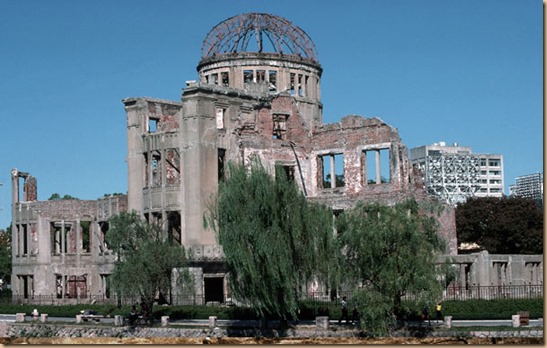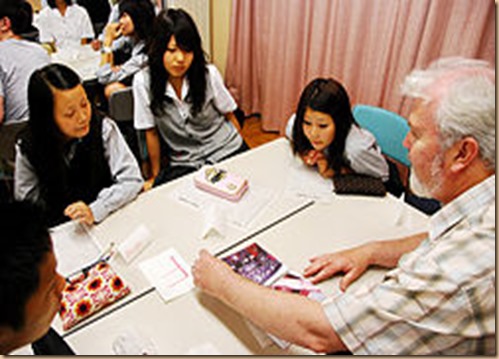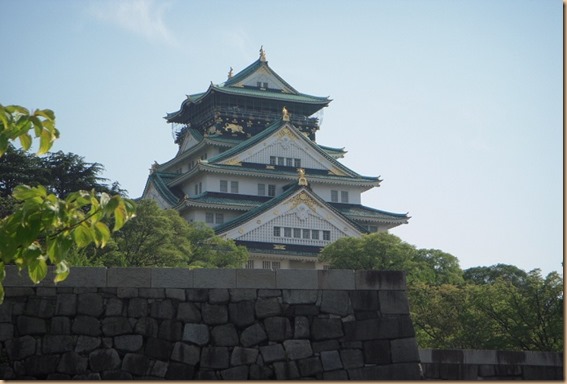They are called, in Japanese, chikan. In English we have a variety of names but the most common words or phrases are either pervert or “dirty old man”. Yes folks one of Japan’s dark sides is its, often ubiquitous, supply of chikans. These men are quite often businessmen who look and act normal but are in fact sleazy individuals who, when riding packed trains or subway cars, goose women. It was in the early 1980’s when I witnessed a chikan in action and came to the aid of the woman who was having her butt fondled by a tall businessman dressed in a dark blue suit. He was pretending to read a folded newspaper with one hand while he got his jollies with his other hand.
It was a warm spring morning in 1983 when I boarded the subway for downtown Osaka. The train was packed and like the sardines in an unopened can, we commuters were jammed up against each other unable to move. Now, in these situations it best for men to, if possible, raise his hands above his head and grab one of the swinging hand straps that are hanging from the polished stainless steel bars that run the length of the subway car on both the left and right sides. There are two reasons for doing this: 1. holding the strap enables you to maintain your balance and not fall into people when the train rumbles through the tunnel twisting and turning. 2. to clearly show any women pressed up beside you that, if she is goosed, your hands are not responsible.
The trained rattled its way through the tunnel; stopping at each station picking up and dropping off hundreds, if not thousands, of harried commuters. At one station, I watched as one passenger stood from an end seat and pushed his way off the train. Quickly I pressed forward through the phalanx of black haired passengers and collapsed into the vacant seat much to the chagrin of a high school student who had had the same idea – too late kid, I’m older. Sitting in relative comfort I stared at my fellow commuters jam-packed in front of me. Out of the corner of my eye I noticed a woman, nursing a baby, wedged up against on of the subway car’s doors and the corner of the bench seat. I stared at her for a couple of seconds; noticing that she had a pained look on her young face.
I twisted in my seat and saw, to my surprise, a male hand rubbing her buttocks and actually slipping between the top of her legs. I looked up, trying to spot the chikan. The men squeezed around the woman appeared to be innocent; all reading magazines, books or newspapers. I couldn’t figure out who the chikan was. Then I saw the owner on the filthy hand. He raised it to scratch his nose before returning it to the butt of the woman. Standing and offering my seat to the aforementioned high school student, I squeezed between the commuters until I was standing directly in front of Mr. Sleaze. The woman with the child was now behind me. Mr. Sleaze pretended not to notice me as he continued to “read” his folded newspaper – now in both hands. I stared at him until he was forced to look back at me. “You’re a chikan,” I said to him in Japanese. His face reddened and his head snapped left and right checking to see if anyone had heard my words – they had heard. “You’ve been touching his lady behind me with the baby for the past 10 minutes. I’ve been watching you,” I continued in a loud voice. Around the both of us, people stared. Mr. Sleaze wanted out but we were still rattling our way to the next station.
He was sweating and it was clear panic was setting in. Indeed I was sure he had visions of being arrested and being paraded on the evening news. For a Japanese chikan to be arrested means the lose of his job, friends and, in many cases, family. These thoughts were, I’m sure, rushing through his mind but he was trapped in a packed subway car. There was no escape. For a full minute I stood staring at him, while other commuters moved away from him. Even though there was little room, when the train pulled into the next station, Mr.Sleaze was standing in the center of the car alone. The doors opened and he bolted for the platform. I grabbed at his bag, that had been under his arm and wrenched it from him; he didn’t fight it, just let me take it and ran off the train and disappeared into the crowds.
It was a few days later that I heard, from the woman, that Mr. Sleaze had been arrested. I had given the police the man’s bag and, with the woman in tow, had explained what had happened. The woman thanked me and to this day we are friends. Incidentally, the baby is now a 32 year-old businessman.








